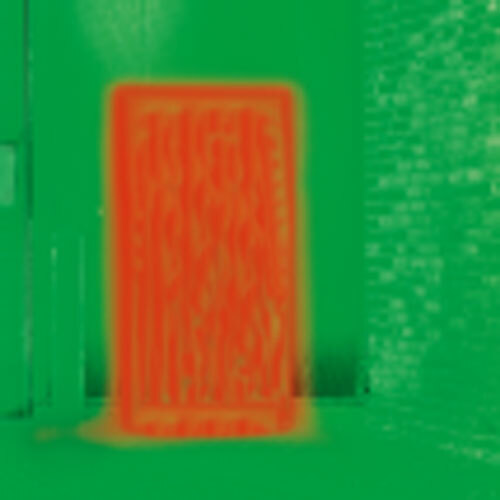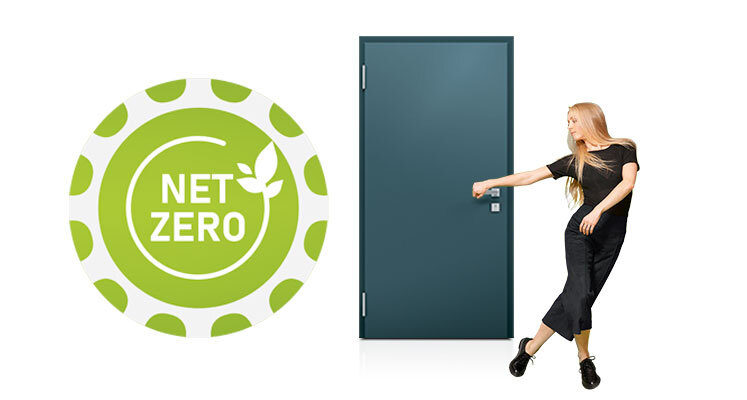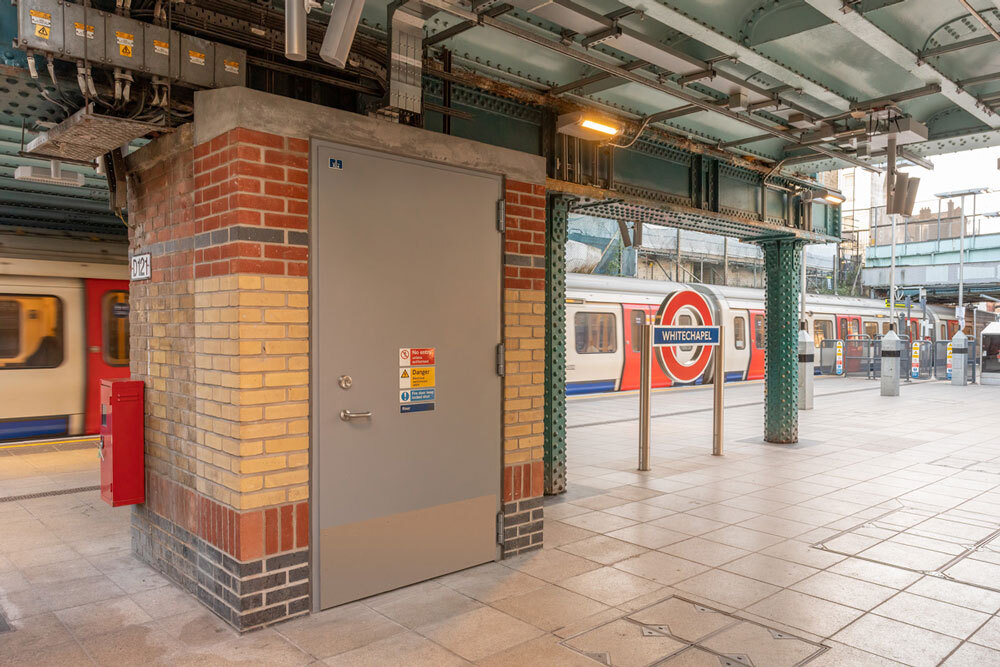In the UK, fire doors are only required to demonstrate integrity under fire conditions – 30, 60, 90 minutes, etc. Steel fire doors are often of a hollow/honeycomb construction and consequently have very poor thermal performance, typically with a U value around 2.3 W(m2)K or worse. They may meet the integrity requirements of a fire situation, but on a day-to-day basis they leak energy.
Building regulations stipulate that a building must meet an overall energy efficiency standard. Poor performing elements can be used, as long as they are compensated for by other parts of the building’s design, but why have fire doors as a weak point in the energy efficiency chain?
Recent updates to building regulations - Conservation of fuel and power: Approved Document L - require doors to have a U value of 1.6 W(m2)K (England) and 1.4 W(m2)K (Wales & Scotland). It's interesting to note that our range of doors outperform these requirements and have done so for decades...


A double fire door, typically 4m2, with a temperature differential of 18oC from inside to out will radiate heat of ~166 watts for a U value of 2.3 W(m2)K compared to ~94 watts for a U value of 1.3 W(m2)K. That’s a lot of wasted energy that can be saved by specifying Teckentrup Insulated fire doors.

Under fire conditions an un-insulated, metal door will contain a fire but offer minimal protection against the passage of thermally radiated heat.
At half a metre from the unexposed surface of the fire door, radiated heat of up to 33.5 kW/M2 after 30 minutes is typically captured during a test. It exposes people queuing in an escape pathway to dangerously harmful conditions and also risks the ignition of close proximity flammable materials. Read more about fire door insulation and integrity here!
The UK & Ireland are the only major European markets where it is NOT mandatory to specify steel personnel doors with both insulation and integrity fire ratings... …we think it should be.
Teckentrup Fire Resistant steel doors are tested to BS EN1634-1, providing up to 120 minutes integrity and up to 60 minutes insulation, increasing the safety of any people in proximity to the door during a fire and contributing to Net Zero objectives by saving energy, day-in, day-out.
